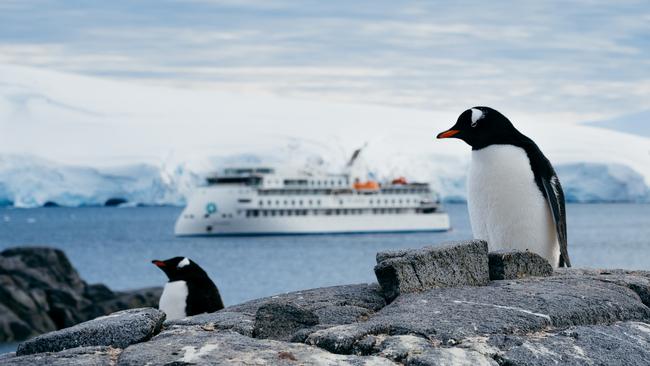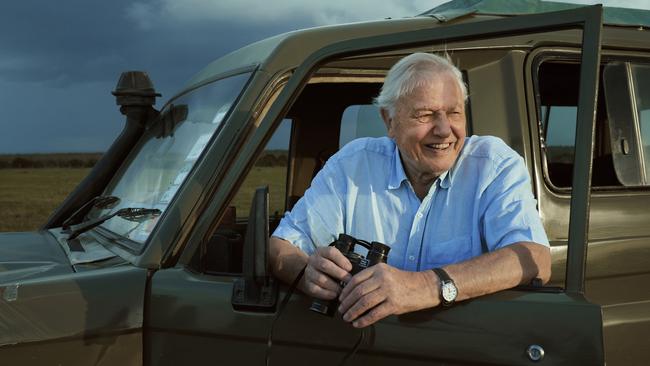Why Antarctica is my favourite place on the planet
Award-winning photographer Scott Portelli has been to the frozen continent 25 times and has plenty of tips for the first-timer.

Scott Portelli is an international award-winning wildlife, nature and underwater photographer and filmmaker based in Sydney. He has spent thousands of hours in remote locations across the globe filming and photographing wildlife and the natural environment, always with a focus on conservation, education and awareness. His prestigious awards include Australian Geographic Nature Photographer of the Year in 2021, Wildlife Photographer of the Year in London in 2016 and 2022 and national winner of the Sony World Photography awards in 2016. He was awarded first place with Team Australia at the World Photographic Cup 2021, overall winner at the Bio Photo Contest 2021 and category winner at the prestigious GDT Nature Photographer of the Year 2021.
He admits Antarctica is his favourite place on the planet and he has visited the region more than 25 times in the past 10 years. From February 25-March 9, he’ll be co-host of a 14-day itinerary with Majestic Whale Encounters aboard the 71-cabin Aurora Expeditions ship Sylvia Earle, launched in 2022 and named for this pioneering conservationist.

“I can’t wait to be able to share this special place with a passionate group of explorers. It is the towering icebergs, abundance of wildlife, remoteness and vast size of this frozen world that I love. Not only are we photographing this incredible destination but the expedition allows you to get in the water to snorkel and dive below the surface of Antarctica. There are very few people on the planet who can say they have done this, which makes it even more special. It’s like being in a BBC documentary, swimming alongside seals, penguins and whales.”

My top tips for Antarctic journeys
When travelling on most Antarctic expeditions you need to be prepared as you cross the Southern Ocean. It is exciting, to say the least, but be sure to take advantage of the facilities aboard the ship you’re travelling on. Sylvia Earle has one of the best decks to spot wildlife, including the albatross, petrels, prions and other marine birds that often fly alongside. This makes for some close encounters and great photography. But the freezing temperatures and weather will affect all your camera gear, so bring covers for cameras, rain jackets for camera bags and spare batteries as the cold will deplete them faster than you think. Pack a long lens, as often the action happens when you are aboard the ship or in a Zodiac cruising around the ice and landscapes. Ensure you are ready for sights such as a breaching whale, porpoising penguin or seals on the ice.

Timing is everything for wildlife viewing
Any month of the summer season (November to March) is amazing to be in Antarctica, but at the beginning and end of the season, the light is really stunning. The early season means there’s a lot of ice whereas later in the summer, you start to see the emergence of fledgling penguins, and whales feeding on krill (marine crustaceans), and sightings of seals on ice floes.
Packing tips

I always include a dry bag for cameras and other gear to be confident that water or sea spray won’t come into contact. For my incoming Antarctic trip, I’ll be taking my Olympus OM1 with a 40-150mm lens. It is one of my go-to setups for photographing wildlife close up while still having enough zoom to capture any action that might be further away.
On the road
I keep travel documents connected to me at all times, whether in my jacket or a travel bag around my waist. I always keep copies on my phone, too, and use the TripIt travel planner app for itineraries and updates on flights. I place all batteries in one super-strong, flame-retardant LiPo bag that can withstand very high temperatures for a reasonable period of time. This also ensures there’s less likely to be any issues when passing through Customs.
Comfort zone
I always wear comfortable clothing when travelling, especially on flights, and
if that includes a belt, I ensure it’s plastic with no metal clip so I can pass easily through
airport security checks and metal detectors without wasting time taking it off.

Stay a while
I love the Falkland Islands, a destination with English-style homesteads and incredible wildlife virtually on the doorstep. My favourite accommodation there is Sea Lion Island Lodge, which features a wraparound window in the lounge and provides the perfect spot to observe colonies of gentoo penguins, elephant seals lining the shores, and an abundance of birdlife wading in the ponds. There are 12 guestrooms, including family options. The Falkland Islands is such a remote location and its natural beauty remains remarkably pristine. There’s nothing between the wildlife haven of Sea Lion Island Lodge and Antarctica but the vast waters of the South Atlantic Ocean.

My favourite restaurant
Some of the best things about travelling to remote towns is that they provide a hub or gateway to amazing destinations, discovering quaint cafes and restaurants along the way. When I travel to Ushuaia in Argentina, a port on the southernmost tip of South America and the departure point for many Antarctic cruises, I always visit Kuar restaurant for authentic Argentinian and Spanish food in a relaxed and cosy atmosphere. It’s a great place to meet up with fellow expeditioners to chat about upcoming adventures or to reminisce about a recent trip.

Travel inspiration
I am always inspired by historical figures who have walked a path that has not been taken before, including Edmund Hillary on Everest, Ernest Shackleton in Antarctica, and aviation pioneer Amelia Earhart. As a wildlife photographer, the work of true icons such as David Attenborough always inspires and motivates me to continue exploring and travelling through our natural world.






To join the conversation, please log in. Don't have an account? Register
Join the conversation, you are commenting as Logout